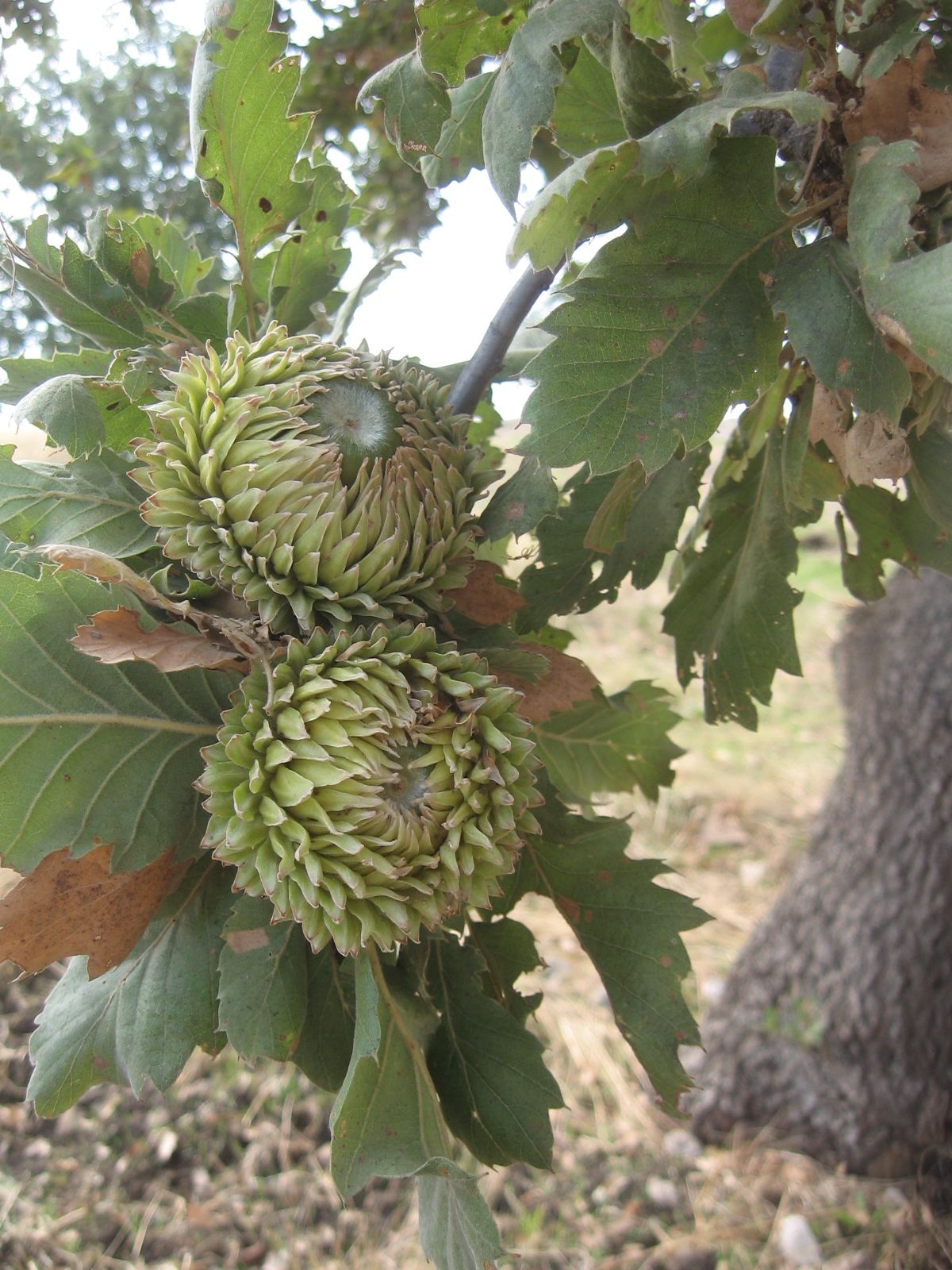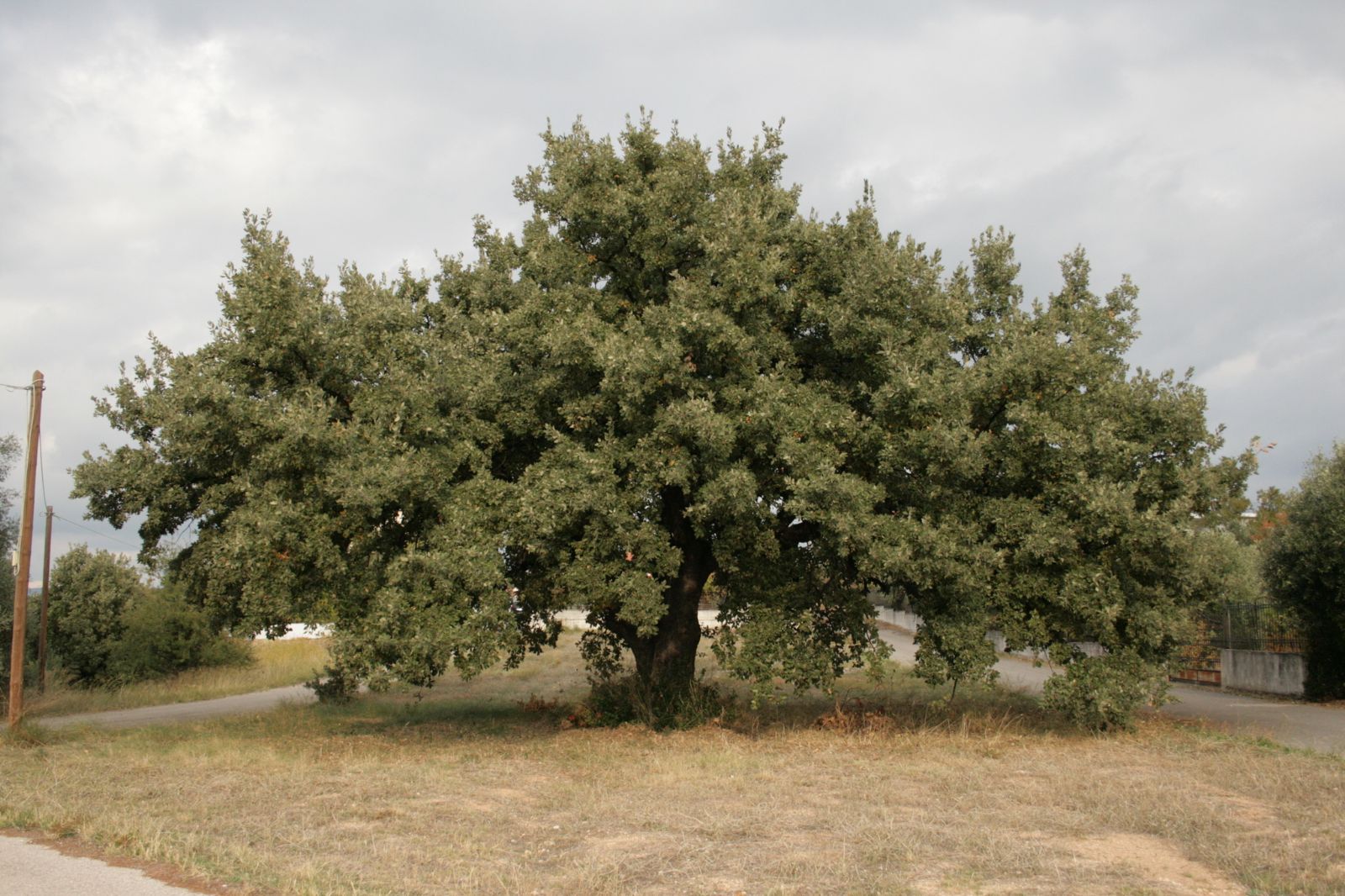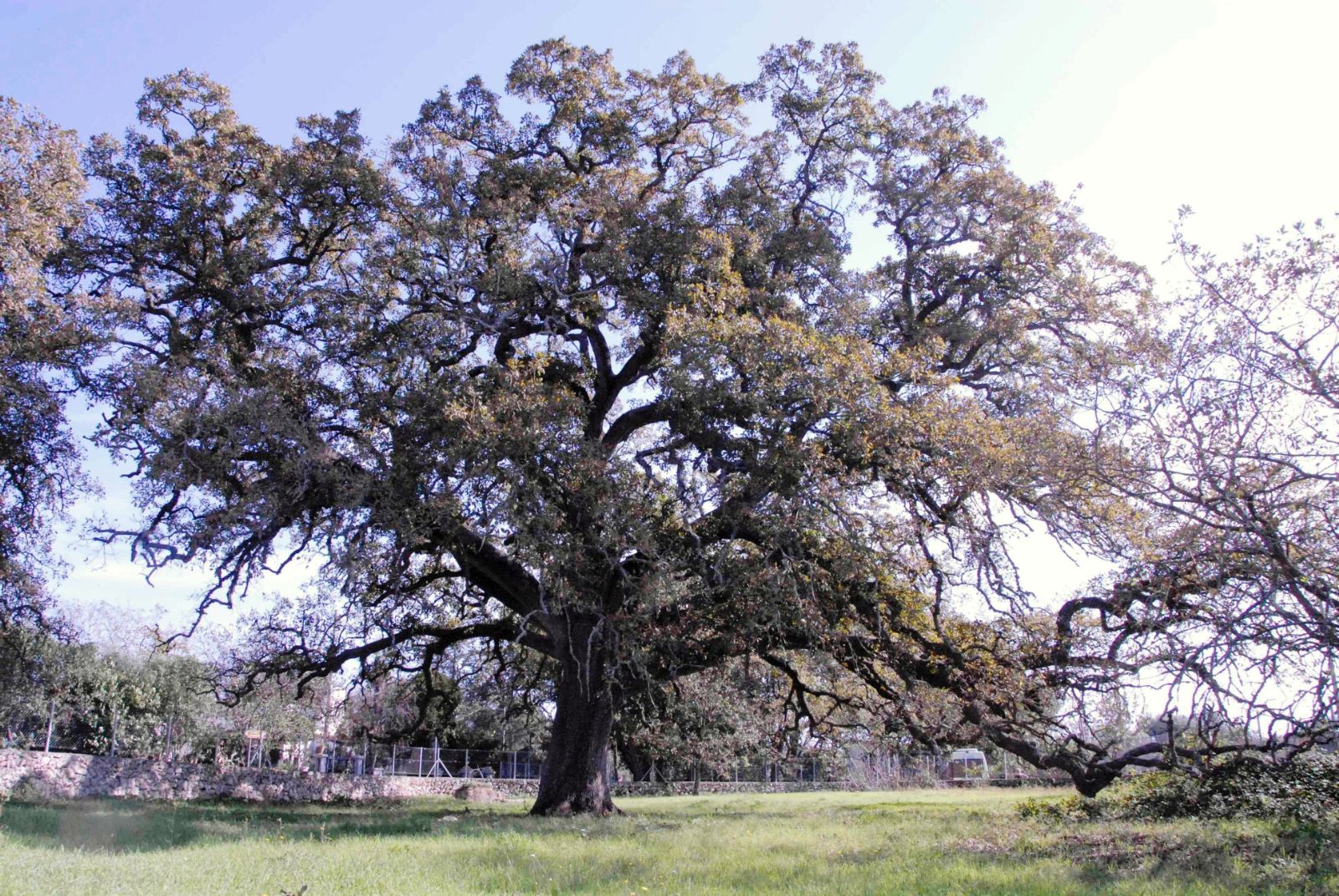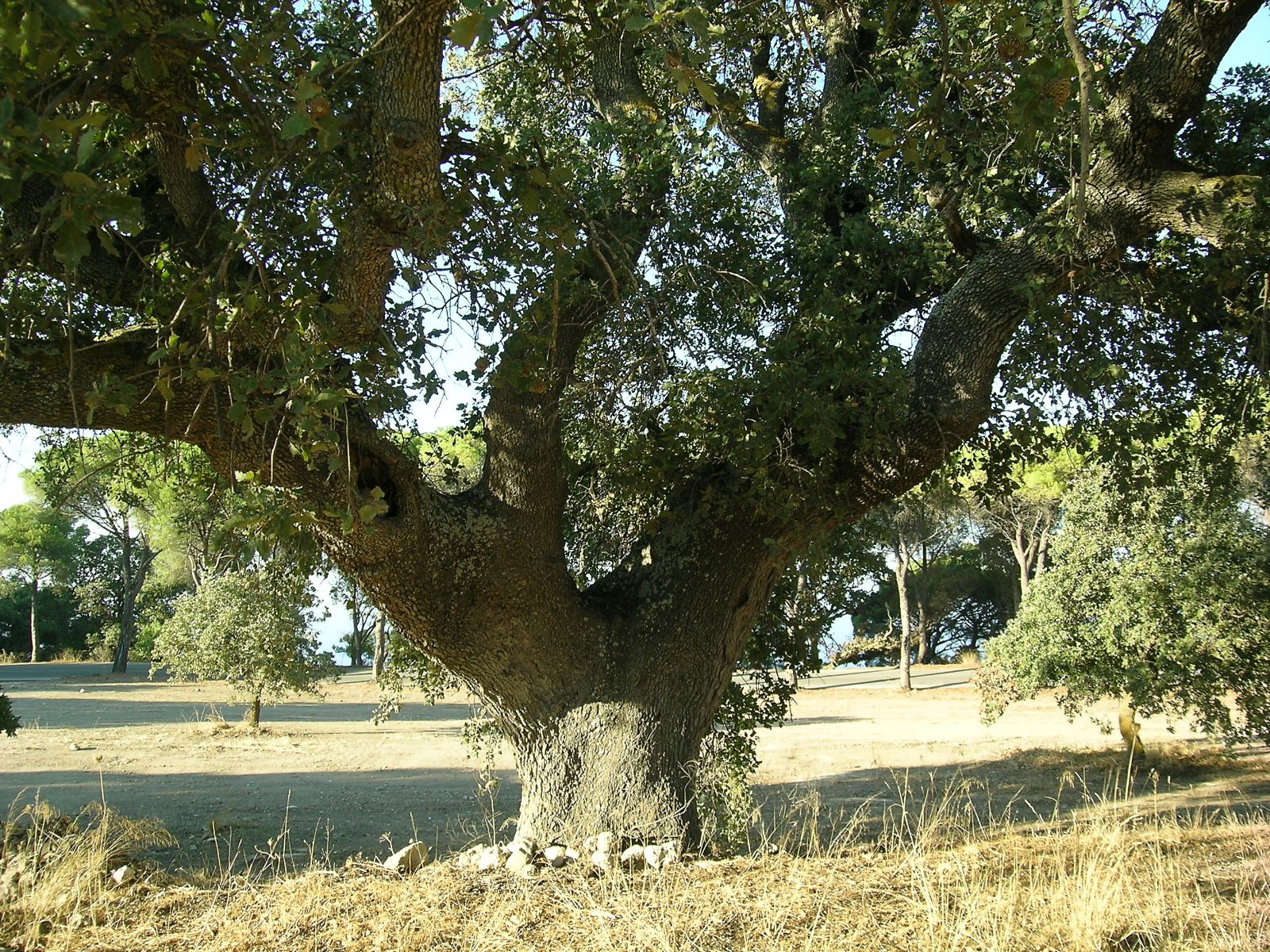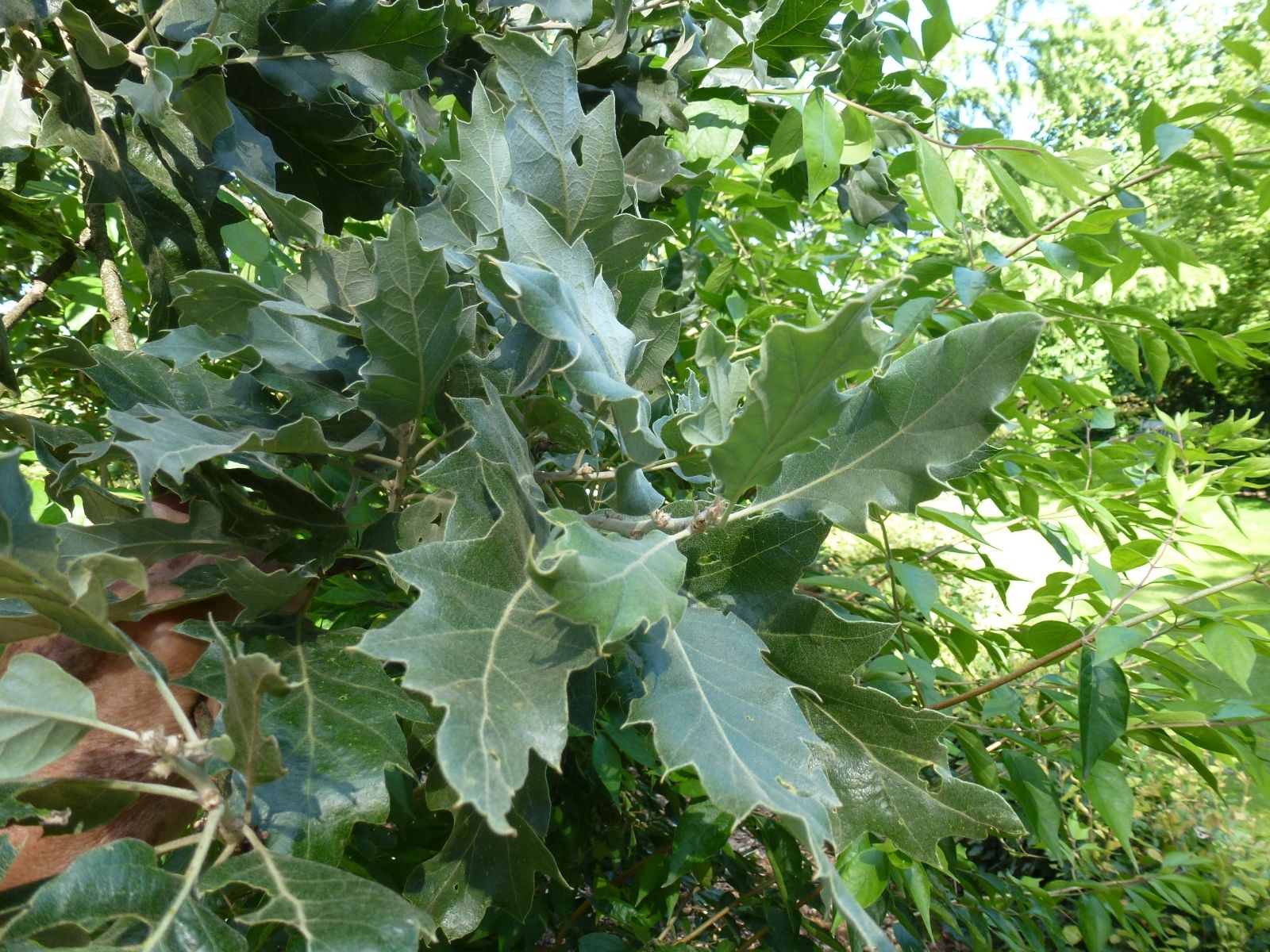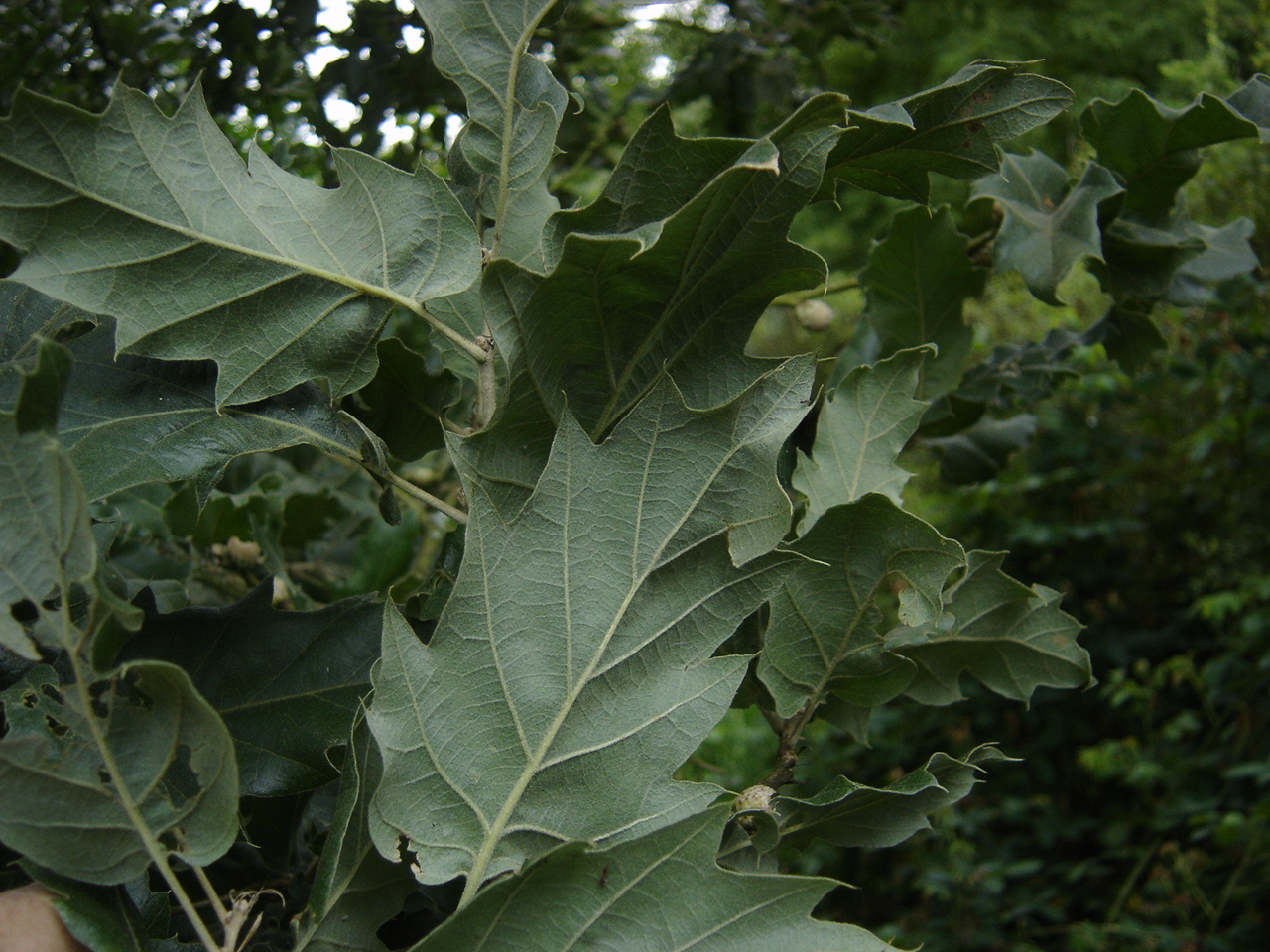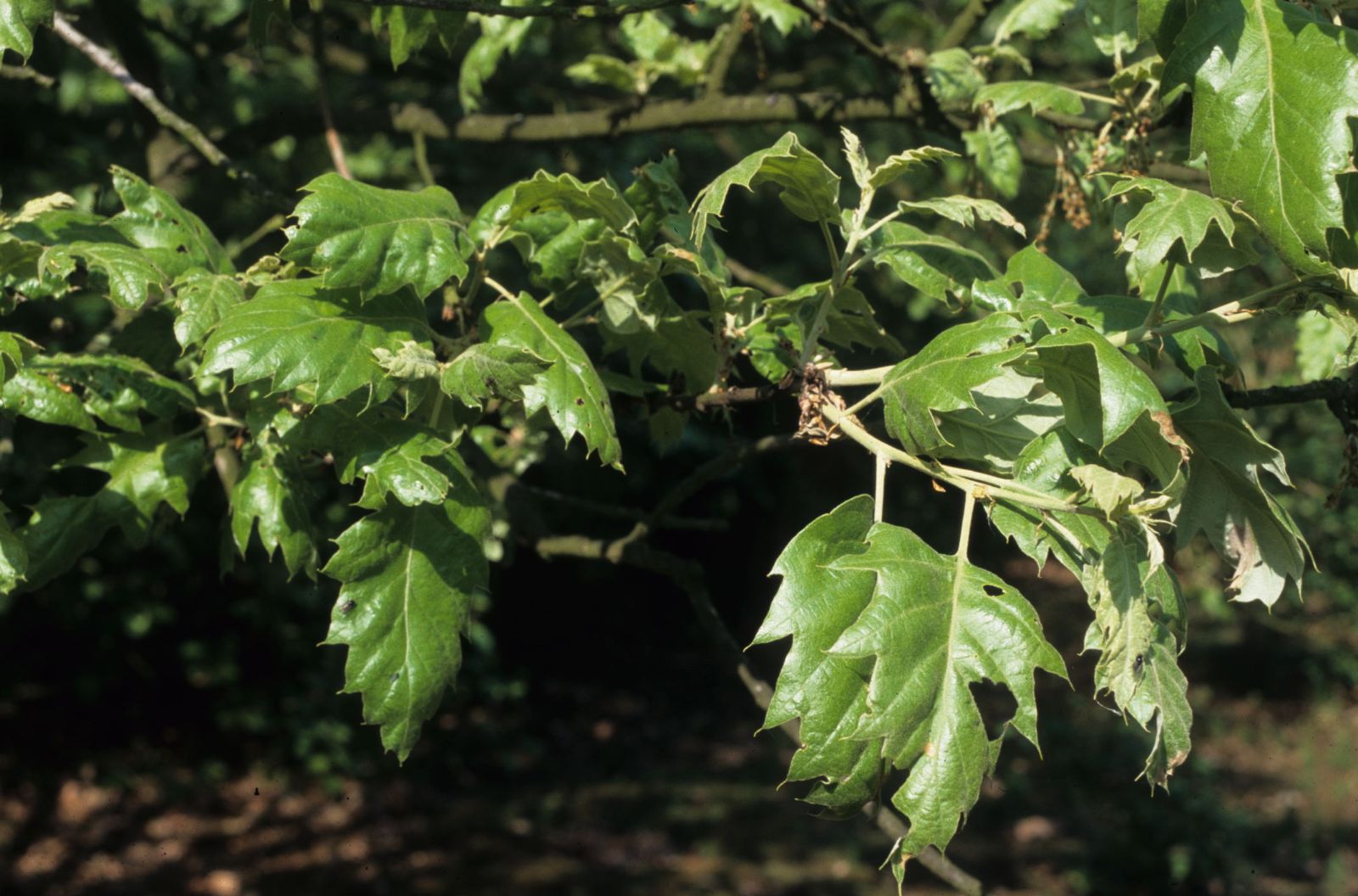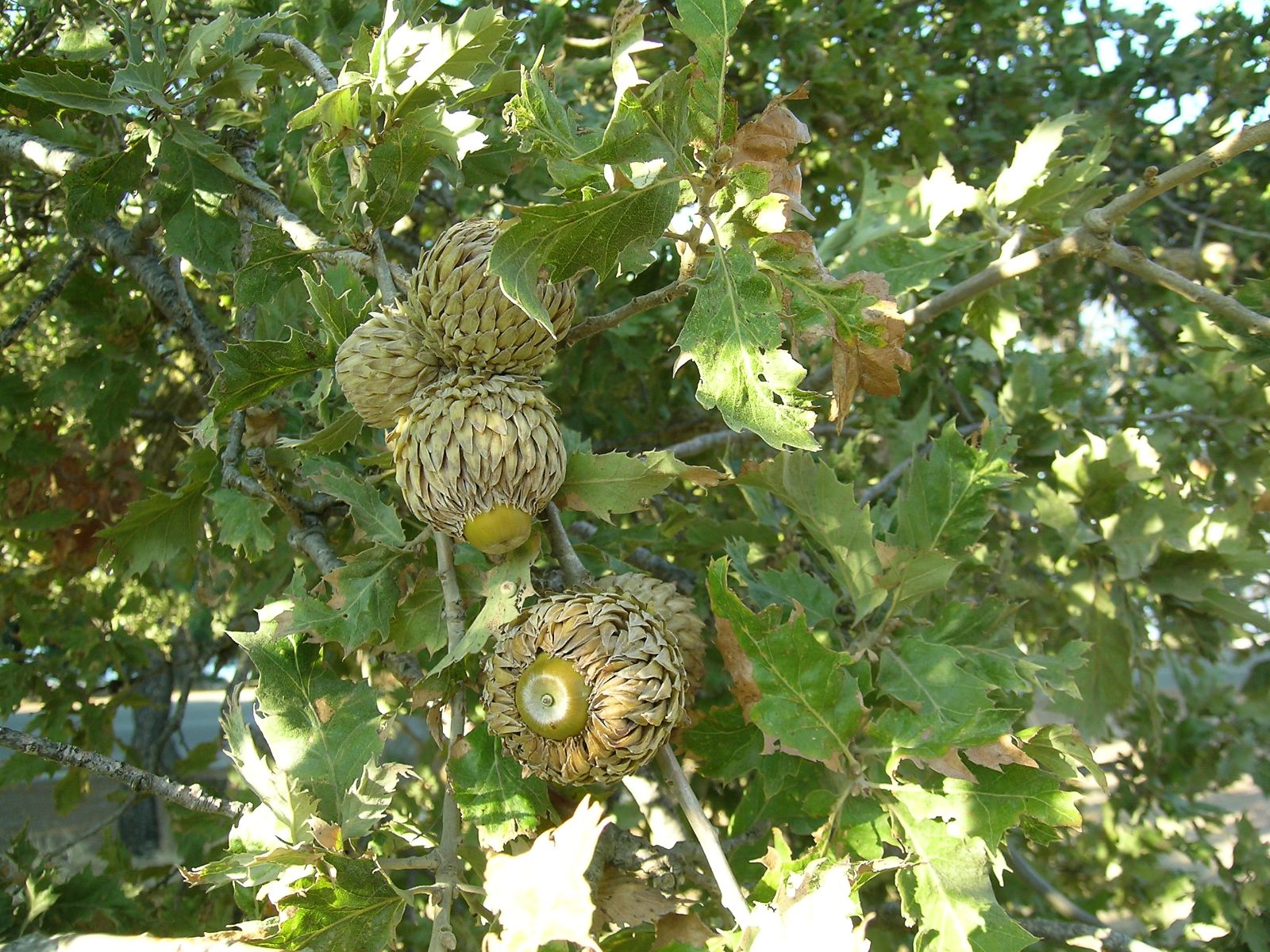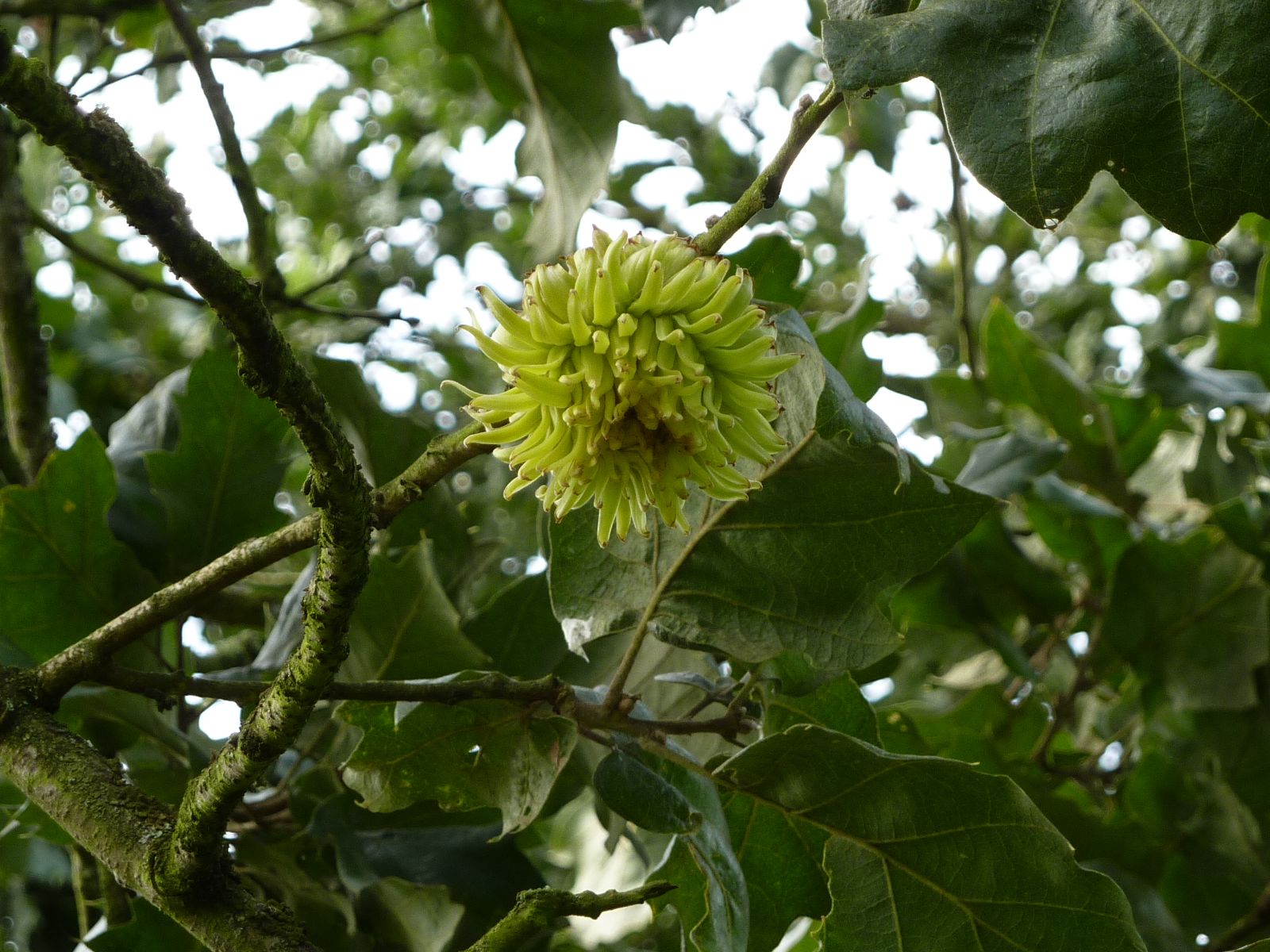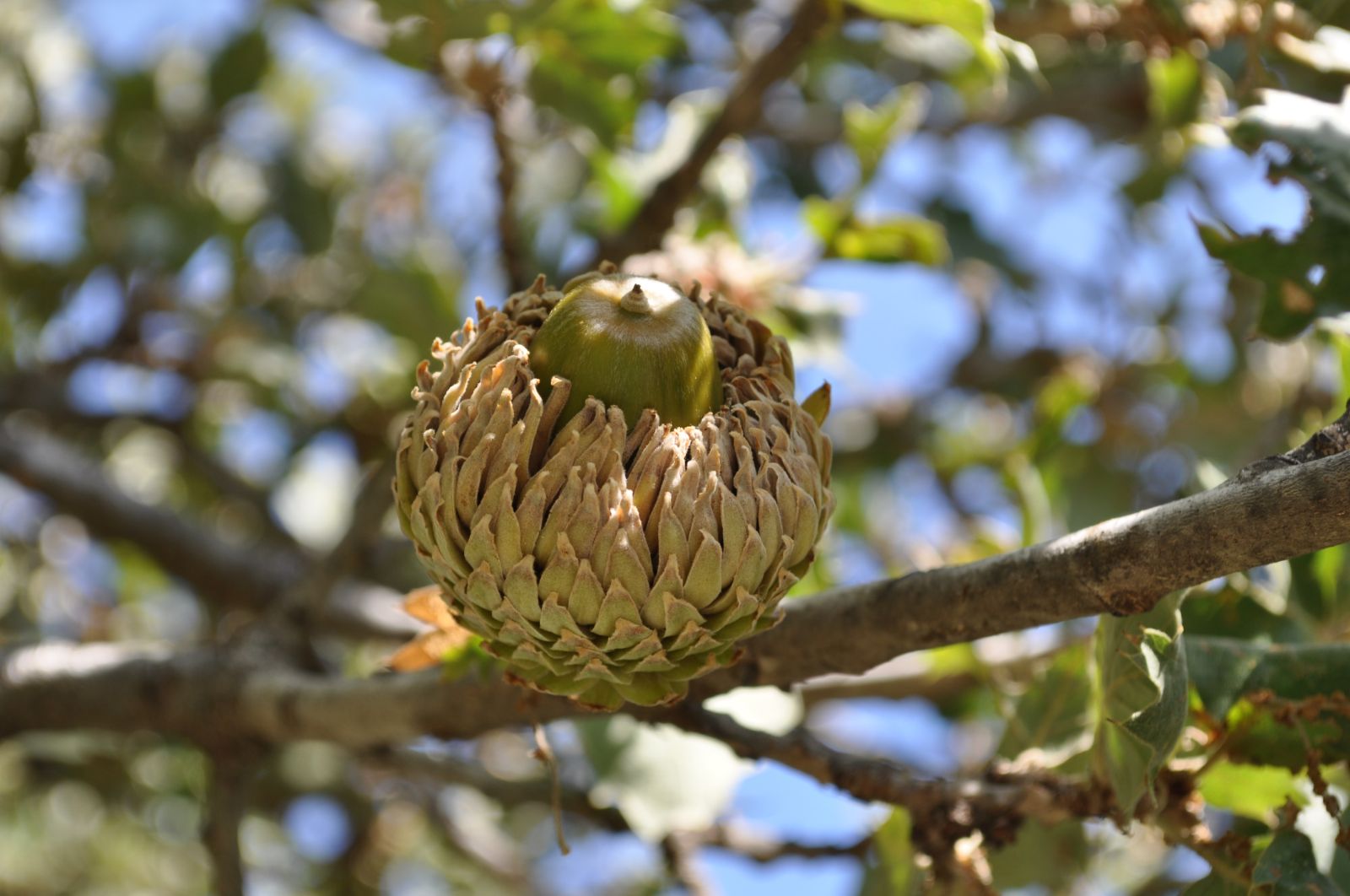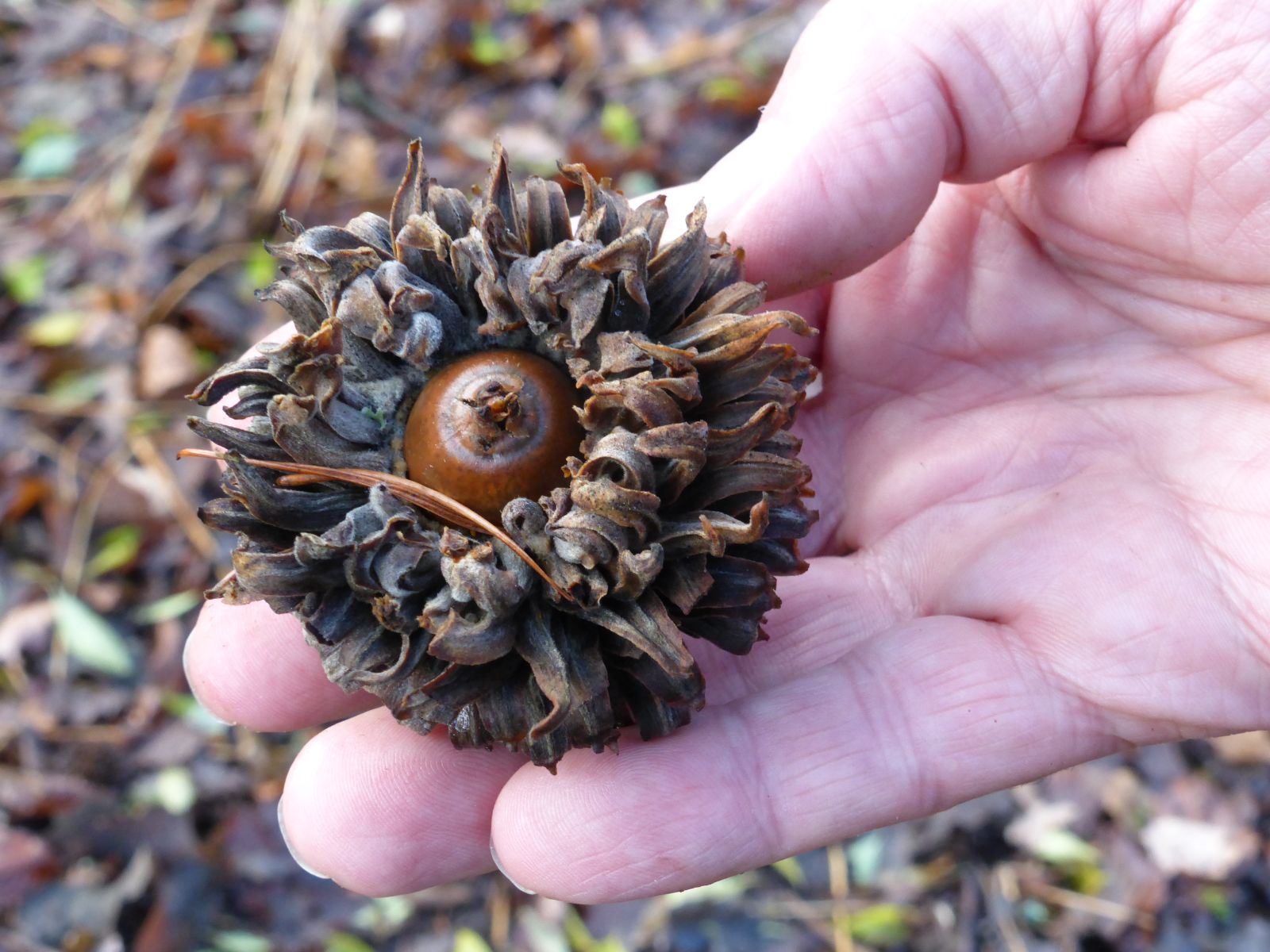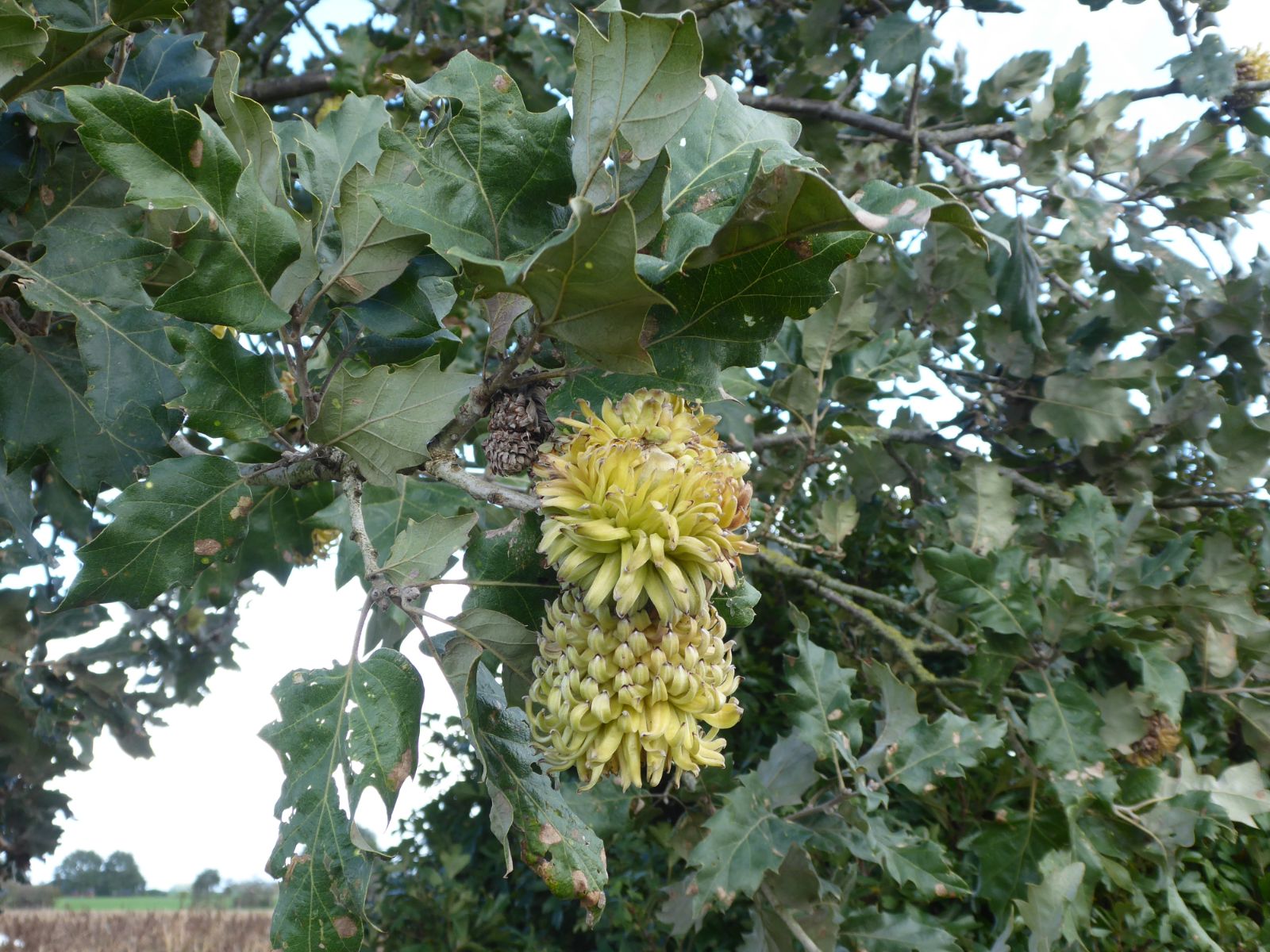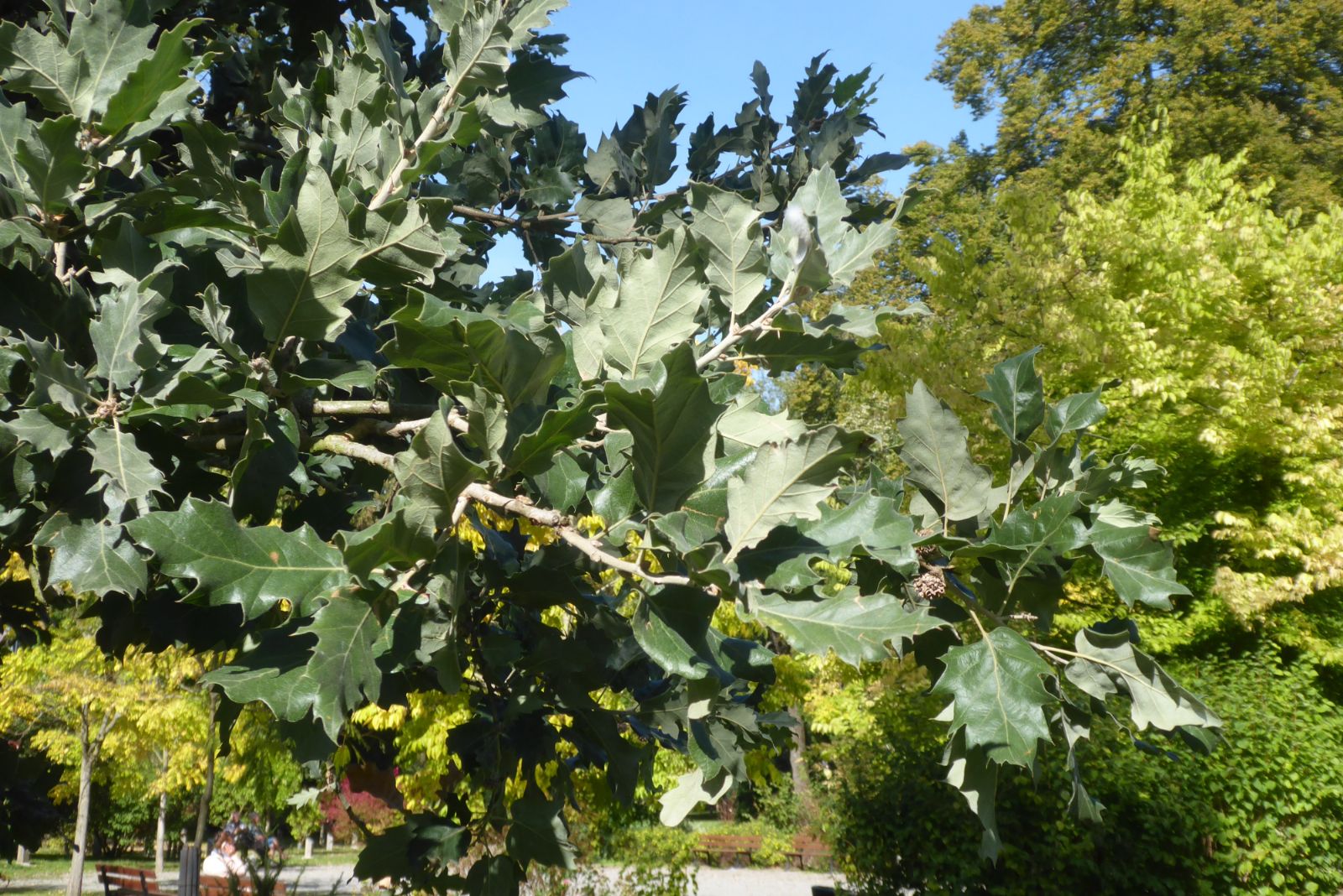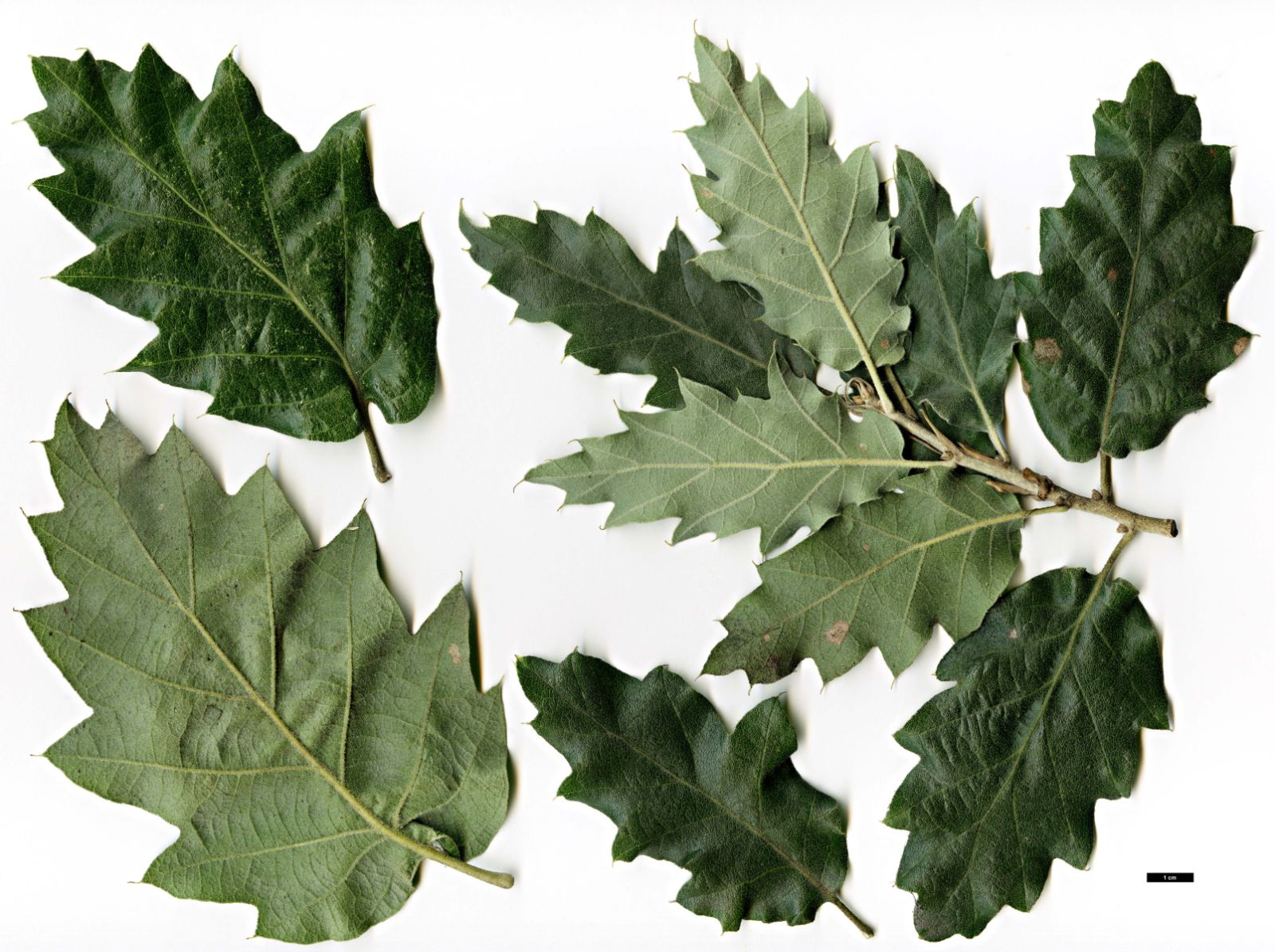Quercus macrolepis
Sponsor
Kindly sponsored by
The Trees and Shrubs Online Oak Consortium
Credits
Allen Coombes & Roderick Cameron (2021)
Recommended citation
Coombes, A. & Cameron, R. (2021), 'Quercus macrolepis' from the website Trees and Shrubs Online (treesandshrubsonline.
Genus
- Quercus
- Subgen. Cerris, Sect. Cerris
Common Names
- Valonia oak
- Vallonea oak
Synonyms
- Quercus aegilops subsp. macrolepis (Kotschy) Camus
- Quercus aegilops var. macrolepis (Kotschy) Boiss.
- Quercus graeca Kotschy
- Quercus ithaburensis subsp. macrolepis (Kotschy) Hedge & Yalt.
- Quercus ehrenbergii Kotschy
- Quercus pyrami Kotschy
- Quercus vallonea Kotschy
- Quercus ungeri Kotschy
- Quercus echinata Lam.
- Quercus hypoleuca Kotschy ex A. DC.
- Quercus massana Ehrenb. ex Wenz.
- Quercus ventricosa Koehne
- Quercus cretica Bald.
Infraspecifics
Other taxa in genus
- Quercus acerifolia
- Quercus acherdophylla
- Quercus acrodonta
- Quercus acuta
- Quercus acutifolia
- Quercus acutissima
- Quercus afares
- Quercus affinis
- Quercus agrifolia
- Quercus alba
- Quercus aliena
- Quercus alnifolia
- Quercus aquifolioides
- Quercus arizonica
- Quercus arkansana
- Quercus aucheri
- Quercus augustini
- Quercus austrina
- Quercus × auzendei
- Quercus baloot
- Quercus bambusifolia
- Quercus baronii
- Quercus bicolor
- Quercus brantii
- Quercus buckleyi
- Quercus canariensis
- Quercus canbyi
- Quercus candicans
- Quercus castanea
- Quercus castaneifolia
- Quercus cerris
- Quercus chenii
- Quercus chrysolepis
- Quercus coccifera
- Quercus cocciferoides
- Quercus coccinea
- Quercus conspersa
- Quercus crassifolia
- Quercus crassipes
- Quercus delavayi
- Quercus dentata
- Quercus deserticola
- Quercus dolicholepis
- Quercus douglasii
- Quercus dumosa
- Quercus durifolia
- Quercus eduardii
- Quercus ellipsoidalis
- Quercus emoryi
- Quercus engelmannii
- Quercus engleriana
- Quercus euboica
- Quercus eugeniifolia
- Quercus fabri
- Quercus faginea
- Quercus falcata
- Quercus floribunda
- Quercus frainetto
- Quercus franchetii
- Quercus fruticosa
- Quercus fusiformis
- Quercus gambelii
- Quercus garryana
- Quercus geminata
- Quercus georgiana
- Quercus germana
- Quercus gilliana
- Quercus gilva
- Quercus glabrescens
- Quercus glauca
- Quercus graciliformis
- Quercus gravesii
- Quercus griffithii
- Quercus grisea
- Quercus guyavifolia
- Quercus hartwissiana
- Quercus hemisphaerica
- Quercus × hispanica
- Quercus hondae
- Quercus hypargyrea
- Quercus hypoleucoides
- Quercus ilex
- Quercus ilicifolia
- Quercus imbricaria
- Quercus incana
- Quercus infectoria
- Quercus insignis
- Quercus ithaburensis
- Quercus kelloggii
- Quercus × kewensis
- Quercus kiukiangensis
- Quercus laceyi
- Quercus laevis
- Quercus lamellosa
- Quercus lanata
- Quercus lancifolia
- Quercus laurifolia
- Quercus laurina
- Quercus × leana
- Quercus leucotrichophora
- Quercus × libanerris
- Quercus libani
- Quercus lobata
- Quercus lobbii
- Quercus lodicosa
- Quercus longinux
- Quercus longispica
- Quercus look
- Quercus × ludoviciana
- Quercus macranthera
- Quercus macrocalyx
- Quercus macrocarpa
- Quercus marilandica
- Quercus mexicana
- Quercus michauxii
- Quercus mongolica
- Quercus monimotricha
- Quercus montana
- Quercus morii
- Quercus muehlenbergii
- Quercus myrsinifolia
- Quercus myrtifolia
- Quercus nigra
- Quercus × numidica
- Quercus oblongifolia
- Quercus obtusata
- Quercus oglethorpensis
- Quercus oxyodon
- Quercus pagoda
- Quercus palmeri
- Quercus palustris
- Quercus pannosa
- Quercus parvula
- Quercus petraea
- Quercus phellos
- Quercus phillyreoides
- Quercus planipocula
- Quercus poilanei
- Quercus polymorpha
- Quercus pontica
- Quercus prinoides
- Quercus pubescens
- Quercus pyrenaica
- Quercus rehderiana
- Quercus reticulata
- Quercus robur
- Quercus rotundifolia
- Quercus rubra
- Quercus rugosa
- Quercus rysophylla
- Quercus sadleriana
- Quercus salicina
- Quercus sartorii
- Quercus × schneideri
- Quercus schottkyana
- Quercus semecarpifolia
- Quercus senescens
- Quercus serrata
- Quercus sessilifolia
- Quercus setulosa
- Quercus shumardii
- Quercus sinuata
- Quercus spinosa
- Quercus stellata
- Quercus stenophylloides
- Quercus suber
- Quercus subspathulata
- Quercus tarokoensis
- Quercus tatakaensis
- Quercus texana
- Quercus tomentella
- Quercus trojana
- Quercus tungmaiensis
- Quercus turbinella
- Quercus × turneri
- Quercus undulata
- Quercus utahensis
- Quercus utilis
- Quercus uxoris
- Quercus variabilis
- Quercus velutina
- Quercus virginiana
- Quercus vulcanica
- Quercus warburgii
- Quercus wislizenii
- Quercus xalapensis
Tree 5–25 m tall, foliage deciduous or late-falling in winter or spring, depending on climate, with a broad crown, sometimes in old specimens with a massive trunk; bark dark brown or grey, almost smooth or slightly fissured; young shoots densely tomentose, greyish or yellowish-brown, becoming greyish brown with small lenticels, losing their tomentum in the third year. Buds ovoid, 3–6 mm long, tomentose, stipules linear, 1 cm long, densely felted, deciduous, sometimes persisting on each side of the buds. Leaves distributed over stem, often in clusters at branch tips, very variable, usually ovate, sometimes oblong, 4–14 × 2.5–8 cm, base cordate or rounded or truncated, sometimes Z-shaped, apex acuminate and obtuse, or rounded or acute, with 5–9 subtriangular irregular lobes with aristate or mucronate teeth, sinuses rounded; intercalary veins absent; leaves emerge covered in yellowish tomentum above and below, upper surface becoming dull green, finely stellate-pilose, lower surface greyish-green, densely stellate-pilose, petiole 1–3.5 cm. Peduncle almost absent, sturdy. Fruit maturing in second year, very variable. Cupule hemispherical to cyathiform 20–40 mm diameter, densely pubescent; scales linear-oblong, appressed to spreading, becoming woody, uppermost often elongated, variously arranged; acorn included to one third exserted, apically convex to obtuse.(Hedge & Yaltirik 1994; le Hardÿ de Beaulieu & Lamant 2010)
Distribution Albania Greece including Crete, Lesbos, and other Aegean Isles Italy Southeast North Macedonia South Turkey Eurpean & western, central and southern Anatolia
Habitat Scrub, 50–1700 m. At lower elevations found with Quercus coccifera, Cistus creticus, Rhamnus alternifolia, Phillyrea media, Lavandula stoechas; at higher altitudes found with Pinus brutia, P. pinea, Q. cerris, Q. libani, Ceratonia siliqua, Juniperus oxycedrus, Vitex agnus-castus, Myrtus communis and Pistacia lentiscus.
USDA Hardiness Zone 6
RHS Hardiness Rating H6
Conservation status Least concern (LC)
Taxonomic note For some, this is a subspecies of Q. ithaburensis, but Michael Avishai (2016) and others have proposed to restore to Q. macrolepis its species status, based on morphological differences (larger leaves and acorn cups, scales longer and more recurved than in Q. ithaburensis), distinct distributions, and their profoundly different climatic niches (Dufour-Dror & Ertas 2004). Linnaeus used the name Q. aegilops, probably for this species, but due to errors in the description and to confusion surrounding Linnaeus’ herbarium specimens the name has been rejected (Lacaita 1920; Govaerts et al. 2020).
Valonia Oak is found in southeastern Europe, mainly in the Balkans and northern Greece, and in southern and western Turkey. Le Hardÿ de Beaulieu & Lamant (2010) limit the distribution to four provinces in western Anatolia: Çanakkale, Balıkesir, İzmir, and Uşak. It is also found in Italy, where it was possibly introduced by Greek settlers. Together with Q. ithaburensis and Q. brantii, this species forms the Aegilops or Valonia group within section Cerris (Simeone et al. 2018). According to Michael Avishai (2016), these oaks share nine common features:
- leaves relatively thick, coriaceous, almost xeromorphic, but large, densely tomentose (at least beneath) and often semi deciduous, persisting till the new growth flush or the distinctly whitish secondary summer flush
- leaf blade distinctly ovate, rarely lyrate, with large acuminate lobes and an aristate-mucronate, or even serrulate bristly margin
- secondary leaf veins parallel, mostly lacking intercalaries
- acorns large, among the largest in the genus, ripening biannually, inserted into a cup of large, thick, and distinct scales
- cupules sessile or on a thick peduncle up to 5 mm long; scales large, broad, ligulate, loose, and reflexed, or rhomboidal, and tightly appressed
- species distinctly allopatric, native to semiarid habitats in the Fertile Crescent; they mostly grow into wide, low branching trees that form single-species-dominated communities of open, park-like woodlands
- deciduous, xero-thermophilic and limited to low elevations, mostly on limestone- or basalt-derived alkaline soils in Southwestern Asia or the Eastern Mediterranean countries, rare or lacking on the Mediterranean Islands
- acorns have high content of nutritionally valuable materials; cupules are rich in tannins
- domesticated early by local populations for human consumption and hog feeding, tanning, and tool making, with profound implications for their modern distribution.
Quercus macrolepis grows naturally in open formations in alluvial valleys and hills, on dry limestone soils (karst), but seems indifferent to soil pH. It prefers rich soils but can make do with less. It withstands wind but does not appreciate proximity to the sea. Though drought-resistant, it is sensitive to low temperatures, which explains its presence on south-facing slopes and in enclosed valleys, where it is protected from frigid winds. The species appreciates long, hot, dry summers, short autumns followed by cool, humid winters and rainy springs (le Hardÿ de Beaulieu & Lamant 2010).
As an ornamental tree Q. macrolepis is a triple threat (in the sporting and theatrical sense) as a quality act in habit, foliage, and acorns. A low spreading habit leads to a broad, domed, graceful canopy. Its leaves are elegantly toothed, emerge densely covered in grey, and transition to glossy dark green to grey-green on the upper surface, creating a bluish grey effect with yellowish highlights. Leaves can turn yellow late in the season and generally fall, retaining a greyish aspect through much of winter. In spring, yellow leaf buds and catkins produce a burst of colour. The cupule scales rank amongst the largest in the genus, gracefully recurved and woody, dramatically extending the diameter of the cupule to 6 cm and exceptionally up to 9.5 cm across (Haddock 2012). When the acorn is forming, these long scales become petal-like and the developing cupules almost take on the appearance of flowers. However, acorns are so far rarely seen in cultivated trees, and one often encounters plants on which cups form without acorns. According to le Hardÿ de Beaulieu & Lamant (2010), a lack of humidity during the crucial ripening period in the second year of acorn maturation may cause acorns to abort; acorns may start to appear on 10-year-old trees, but are rarely viable, while regular fructification can be expected to start at 20 years. Shaun Haddock (2012) also notes that acorns are usually aborted on his trees at Arboretum de la Bergerette, France.
This species is probably one of the first oaks to be domesticated, together with Q. rotundifolia. The nutritional value of its acorns, for both human and animal consumption, and the high tannin content of the cupules, which were used for treating leather and dyeing cloths, favoured the dispersal of Q. macrolepis to various sites of Ancient Greek culture, including Crete, Cyprus, and southern Italy. In modern times, the economic value of the species contributed to its dispersion further afield: it was introduced to Australia from Turkey as part of a project to produce acorn cups for the tanning industry, in part to save Black Wattle (Acacia mearnsii) – wattle bark was the principal source of tannin for Australia’s leather and footwear industries and by the late 19th century uncontrolled bark stripping had brought the species to the edge of extinction (Cameron 2014). In recent years, an initiative on the Greek island of Kea has successfully revived the local acorn-based industry, developing responsibly sourced, oak-based income for farm families by facilitating the exportation of Q. macrolepis acorn caps to traditional leather tanneries and by developing and promoting acorn-based products and cuisine (Mayer Maroulis 2014; Mayer 2019).
An impressive specimen grows in the Jardin des Plantes in Paris, planted by Desfontaines in 1814. In 2012 it measured 20 m × 1 m dbh, with a 17-m crown spread (Laharrague 2013). The species is said to have been introduced to cultivation in Western Europe in 1713, but of course that does not take into account the probable introduction to Italy by the Ancient Greeks. The current champion tree is likely of this origin and grows near Tricase in Apulia, Italy. Its trunk has a dbh of 1.28 m, measured in 2019 (monumentaltrees.com 2021). It is known as the Quercia dei cento cavalieri (“Oak of the 100 Knights”), because, so the story goes, Frederick II and his retinue found shelter from a storm under its branches at the end of 12th century. The huge canopy, which currently covers an area of 700 square meters, lends credence to the legend. The fact that the tree is around 700 years old – and would thus not have been even a twinkle in a catkin’s eye at the time of Frederick II – does not (Van Puyenbroeck 2015).
In the United Kingdom, an impressively tall specimen grows at Batsford Arboretum in Gloucestershire, 29 m × 73 dbh. Its unusual height for the species may be a result of seeking light amongst competing conifers, but probably indicates introgression with Q. cerris, which is often the case with trees grown from garden-sourced seed. Three plants at Sir Harold HIllier Gardens are recorded as Q. cerris × macrolepis, the tallest reaching 23.4 m × 69 cm dbh in 2017. All three appear to have grown faster and taller than the pure Q. macrolepis in the collection, the tallest of which was 15.4 m × 46 cm in 2010 (Royal Botanic Garden Edinburgh 1997). The girth champion for UK and Ireland grows at the National Botanic Gardens, Glasnevin, in Dublin, planted 1921 and measuirng 18 m × 88 cm dbh in 2012. At Kew a tree measured 15 m × 44 cm in 1982, while across the river at Syon House, a Valonia Oak measured 19 m × 66 cm dbh in 1982 (Tree Register 2021).
The species is held in collections worldwide. Shaun Haddock (2012) reports that wild-sourced trees from seed collected in Turkey have outgrown its slower cousin Q. ithaburensis at Arboretum de la Bergerette, France, and are on a par in ornamental terms with the renowned cultivar ‘Hemelrijk Silver’. In Castlemaine, Australia, trees from the original introduction for the tanning industry in 1880 have survived, the tallest measuring 12 m (Royal Botanic Gardens Victoria 2020). They have declined in recent years, but attempts to improve their health are showing signs of success (Cameron 2016). Several trees grow at the Jerusalem Botanical Gardens, some accessioned in 1971, wild-sourced from Greece (The Jerusalem Botanical Gardens 2021).
Quercus macrolepis often hybridizes in the wild (and in cultivation) with Q. cerris, and according to Hedge & Yaltirik (1994) the resulting plants can be recognized by their pinnatifid cerris-like leaves and convex macrolepis-like acorn cups. They also reported hybrids with Q. pubescens and possibly Q. trojana. Hybridization with Q. pubescens is unlikely, given that this is a section Quercus species; Q. pubescens can look similar to Q. cerris in that region, so it may be a case of mistaken identity. A tree in Hackfalls Arboretum in New Zealand, grown from seed collected from a Q. macrolepis at Eastwoodhill Arboretum, is believe to be hybridized witha near by Q. × crenata ‘Ambrozyana’ (Berry 2016).
Described in 1860 by Theodor Kotschy in his beautifully illustrated Die Eichen Europa’s und des Orient’s (1858–1862), the epithet references the cupule scales: macro = large + lepis = scales. The common name Valonia Oak derives from the Ancient Greek βάλανος (bálanos, “acorn”). In the tanning industry, the word valonia refers collectively to dried acorn cups used for dressing leather.
'Hemelrijk Silver'
A form with large, silvery white leaves that turn grey-green in summer. Semi-evergreen leaves fall in cold winters. Grown from acorns collected on the island of Rhodes by Robert and Jelena Belder, creators of Belgian aboreta Kalmthout and Hemelrijk. Originally distributed as Q. macrolepis ‘Hemelrijk’, after the garden where it was selected, later ‘Silver’ was added to distinguish it from another oak cultivar, Q. ellipsoidals ‘Hemelrijk’ (van den Berk Nurseries 2021; le Hardÿ de Beaulieu & Lamant 2010). According to Hillier & Lancaster (2014) it is similar to some forms of this species grown at the Sir Harold Hillier Gardens; Shaun Haddock (2012) also noted that wild-collected plants of Q. macrolepis are quite as ornamental as this cultivar, possibily contingent on hot summers. The name ‘Hemelrijk’ means ‘heavenly kingdom’ in Dutch.

